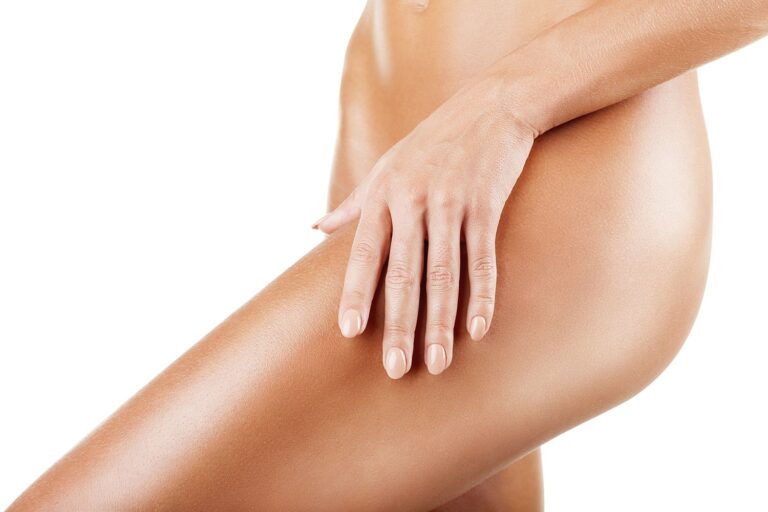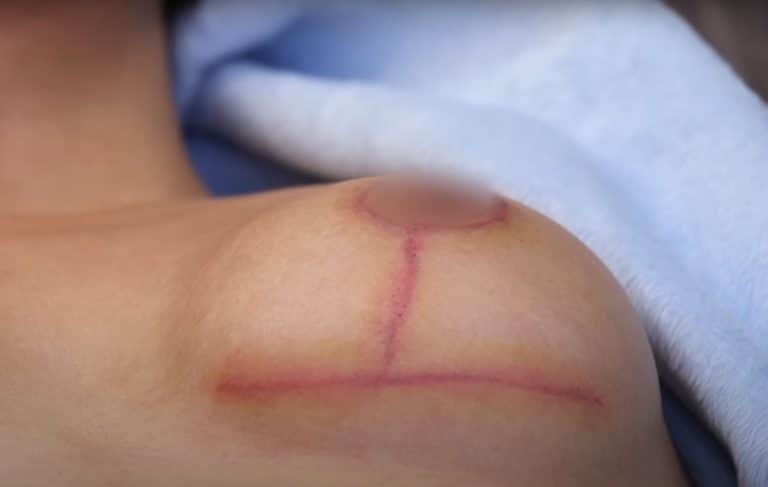Forehead Lift: Procedure, Techniques, Recovery & Risks
Key Takeaways
- Understanding Forehead Lifts: A forehead lift, a type of plastic surgery, can rejuvenate your appearance by reducing wrinkles, frown lines, furrows, and sagging skin on the forehead with minimal scar.
- Eligibility Criteria: Ideal candidates for plastic surgery are healthy individuals with realistic expectations and specific aesthetic concerns about their forehead and brow area, including frown lines, furrows, and excess skin.
- Overview of Techniques: There are several techniques available, including endoscopic, coronal, and temporal lifts, each with its own benefits and considerations for soft tissue attachments and individual expectations.
- Recovery Insights: Post-surgery recovery typically involves some swelling and bruising, with most individual patients resuming normal activities within a few days or weeks depending on expectations.
- Risks and Complications: As with any surgery, there are risks such as infection, scarring, and nerve damage, making it crucial for an individual to choose a qualified surgeon within the patient community.
- Benefits Highlighted: A successful forehead lift can result in a more youthful and refreshed appearance for a person, boosting self-confidence and overall satisfaction.
Understanding Forehead Lifts
Definition and Purpose
A forehead lift is a surgical procedure. It aims to rejuvenate the upper third of the face. This area includes the forehead, eyebrows, and upper eyelids. The primary goal is to reduce wrinkles and sagging skin. By doing so, it creates a more youthful appearance.
Techniques Used
Several techniques exist for performing a forehead lift. Each one has unique benefits and limitations.
- Classic Forehead Lift: This method involves a long incision across the top of the forehead. It allows for significant adjustment but leaves a longer scar.
- Endoscopic Forehead Lift: Surgeons make several small incisions in this technique. They use an endoscope to guide their work. It’s less invasive and results in smaller scars.
- Limited Incision Technique: This combines elements of both classic and endoscopic methods. It targets specific areas with minimal scarring.
Cosmetic Enhancement
Forehead lifts offer various cosmetic benefits. They can smooth out deep creases on the forehead. They also elevate drooping eyebrows, which can make eyes look more open and alert.
Many people opt for this surgery to address signs of aging. A smoother forehead often leads to a more refreshed look.
Functional Improvement
Besides cosmetic benefits, forehead lifts provide functional improvements too.
- Reduced Brow Furrowing: Constant frowning or brow furrowing can cause headaches or discomfort over time.
- Improved Vision: Sagging skin on the forehead can sometimes impair vision by pushing down on the eyelids.
By lifting this area, patients may experience fewer headaches and better eyesight.
Emotional Impact
Undergoing a forehead lift can have emotional benefits as well. Many patients feel more confident after surgery. A younger appearance often boosts self-esteem.
Eligibility Criteria
Ideal Candidates
Ideal candidates for a forehead lift are individuals with forehead wrinkles or brow ptosis. These conditions can make someone look older or more tired than they feel. Forehead wrinkles are lines that form across the forehead due to aging or repeated facial expressions. Brow ptosis involves the drooping of the eyebrows, which can also affect vision in severe cases.
Patients who desire a more youthful appearance often consider this procedure. They might feel their face doesn’t reflect how energetic and vibrant they feel inside. A forehead lift can help them regain confidence by smoothing out wrinkles and lifting sagging brows.
Younger Individuals
Younger individuals may seek enhancements like the Asian double eyelid surgery along with a forehead lift. This combination can create a balanced and harmonious look. The double eyelid surgery is popular among younger patients who want to enhance their eye shape for aesthetic reasons.
A forehead lift can complement these changes by providing a smoother and more youthful upper face. It helps in achieving a refreshed overall appearance without drastic alterations.
Patient Goals
Patient goals must align with what a forehead lift can realistically achieve. It’s important to have clear expectations about the results. A forehead lift won’t stop aging but will reduce visible signs of it on the forehead and brow area.
Patients need to understand that this procedure targets specific issues like wrinkles and brow drooping. It’s not designed to address other facial areas or deeper skin problems. Realistic goals help ensure satisfaction with the outcome.
Medical Considerations
Medical considerations play a crucial role in determining eligibility. Patients should be in good health without underlying conditions that could complicate surgery or recovery. Chronic illnesses like diabetes or heart disease might increase risks during and after the procedure.
It’s essential for patients to discuss their medical history with their surgeon thoroughly. This ensures any potential risks are identified early, making the process safer for everyone involved.
Recovery Time
Recovery time is another factor patients need to consider when deciding on a forehead lift. The initial healing period usually lasts about 7-10 days, during which swelling and bruising are common. Most people return to work within two weeks, depending on their job’s physical demands.
Full recovery might take several weeks as residual swelling subsides gradually over time. Patients should follow post-operative care instructions carefully to ensure smooth healing and optimal results.
Overview of Techniques
Endoscopic
Endoscopic forehead lifts use small incisions hidden in the hairline. Surgeons insert a tiny camera and special instruments through these incisions. They then release, redrape, and resuspend the forehead soft tissue. This technique is less invasive and results in quicker recovery times.
External
External techniques involve longer incisions along the hairline or scalp. These methods allow for more precise adjustments to the forehead tissues. Surgeons can release and redrape more extensively. This approach suits patients with significant sagging or asymmetry.
Internal
Internal techniques focus on lifting the brow from within the scalp or forehead itself. Small incisions are made inside the hairline or behind the ears. The surgeon releases and resuspends tissue without visible scars. This method benefits those needing minor adjustments.
Classic Brow and Forehead Lifts
Classic brow and forehead lifts use a single long incision across the top of the head, from ear to ear. Surgeons can access all areas of the forehead easily. They perform extensive releasing, redraping, and resuspension of tissues. This technique is ideal for patients with deep wrinkles or severe sagging.
Customization Based on Needs
Surgeons customize each technique based on individual patient needs and desired outcomes. Factors like age, skin elasticity, and degree of sagging influence the choice of method. Personalized approaches ensure optimal results for every patient.
Deep Dive into Methods
Endoscopic Approach
The Endoscopic Brow and Forehead Lift is minimally invasive. Small incisions are made behind the hairline. This approach reduces scarring significantly. Surgeons use a tiny camera to see under the skin.
Precise adjustments can be made with this technique. Patients experience minimal downtime after surgery. Recovery is quicker compared to traditional methods.
This method suits patients needing moderate forehead rejuvenation. It offers a balance between effectiveness and recovery time.
External Method
The External Brow Lift is a more traditional approach. It involves making an incision along the hairline or within the scalp.
This method allows for significant lifting and repositioning of the brow. However, scars may be more visible compared to other techniques. Patients must consider this when choosing their surgical option.
It effectively addresses severe forehead sagging. Those with significant drooping will benefit most from this method.
Internal Technique
The Internal Brow Lift uses existing eyelid incisions, making it less invasive. This technique is beneficial for those already undergoing eyelid surgery.
Patients experience reduced recovery time and minimized scarring with this approach. The dual benefits make it an attractive option for many.
It’s suitable for patients seeking subtle improvements without extensive surgery.
Classic Approach
The Classic Brow and Forehead Lift involves a coronal incision across the top of the head, from ear to ear. It’s the most extensive option available.
This method is ideal for patients needing significant correction of brow position and deep forehead wrinkles. Comprehensive results are achieved through this technique.
However, there is a longer recovery period associated with the classic approach. Patients should prepare for extended downtime but can expect remarkable transformations in their appearance.
Recovery Insights
Typical Timeline
Most patients experience a recovery period of about two weeks. During the first few days, there is usually noticeable swelling and discomfort. These symptoms peak around day three and then gradually lessen. Stitches or staples are often removed within one week.
Discomfort and Swelling
Swelling is common after a forehead lift. It often affects the forehead and sometimes the eyes. Discomfort can be managed with prescribed pain medication. Patients might also feel tightness in their forehead, which is normal.
Post-Operative Instructions
Following post-operative instructions is crucial for optimal healing. Patients should keep their head elevated to reduce swelling. Applying cold compresses can help too. Avoid strenuous activities for at least two weeks.
Gradual Return to Activities
Patients can usually return to light activities within a few days. However, full activity should be avoided until cleared by the surgeon. Most people can resume their regular routine in about two weeks.
Side Effects Subsidence
Side effects like bruising and numbness typically subside within a few weeks. Bruising around the eyes may last longer but will fade over time. Numbness in the forehead area might persist for several months but usually resolves on its own.
Patient Community Support
Joining a patient community can be helpful during recovery. Many people find emotional support and practical advice from others who have undergone similar procedures.

Risks and Complications
Scar Formation
Scar formation is a potential risk of a forehead lift. Incisions made during the surgery can leave scars. These scars might be more visible if healing does not go well. Proper care of the incision site is crucial to minimize scarring. Choosing an experienced surgeon can reduce this risk.
Nerve Injury
Nerve injury is another possible complication. The nerves in the forehead area are delicate. Damage to these nerves can occur during the procedure. This may lead to temporary or permanent changes in sensation. Some patients experience numbness or tingling around the incision site.
Loss of Sensation
Loss of sensation around the incision site is common post-surgery. It often resolves within a few months. However, some individuals might experience long-term numbness. This loss of feeling can affect daily activities like washing your face or applying makeup.
Discomfort and Swelling
Discomfort and swelling are typical after a forehead lift. Patients usually feel tightness in their forehead and scalp areas. Swelling can last for several weeks, impacting normal facial expressions temporarily. Pain medications prescribed by your surgeon help manage discomfort.
Infection Risk
Infection is a rare but serious risk associated with any surgical procedure, including forehead lifts. Signs of infection include redness, increased pain, and discharge from the incision site. Following post-operative care instructions reduces the chance of infection.
Hematoma Formation
Hematomas may form under the skin near the surgical area. A hematoma is a collection of blood outside blood vessels, causing swelling and bruising. Small hematomas often resolve on their own, but larger ones might need medical intervention.
Hair Loss Near Incisions
Hair loss near incisions can occur due to trauma to hair follicles during surgery. This condition is usually temporary, with hair regrowing over time. Permanent hair loss happens rarely but remains a possibility.
Importance of Skilled Surgeon
Selecting a skilled surgeon significantly minimizes complications. An experienced professional knows how to handle delicate tissues properly. They also provide better pre- and post-operative care instructions to ensure smooth recovery.
Changes in Surgical Technique
Complications sometimes necessitate changes in surgical technique during the operation itself. Surgeons may need to adjust their approach based on real-time observations or unexpected issues arising during surgery.
Follow-Up Care Importance
Monitoring Recovery
Follow-up appointments are crucial. They help monitor the recovery process after a forehead lift. Surgeons check for proper healing and address any concerns. These visits usually occur within the first week, then at one month, three months, and six months post-surgery.
During these appointments, doctors examine the incision sites. They ensure there are no infections or abnormal swelling. Regular monitoring helps catch potential problems early. This ensures a smoother recovery.
Signs of Complications
Certain signs should prompt immediate consultation with your surgeon. If you notice severe pain that doesn’t improve, contact your doctor. Unusual swelling or redness around the incision sites can indicate infection.
Another sign is fever. A high temperature might mean an infection is developing. Also, if you experience difficulty in moving facial muscles, seek medical advice. These symptoms need quick attention to prevent serious issues.
Patient Compliance
Patient compliance plays a significant role in follow-up care. Following the surgeon’s instructions closely leads to better results. This includes attending all scheduled appointments and adhering to prescribed treatments.
Taking medications as directed is vital for reducing pain and preventing infection. Patients should also avoid strenuous activities during recovery periods. Compliance ensures long-lasting outcomes and reduces the risk of complications.
Long-Lasting Results
Proper follow-up care contributes to achieving long-lasting results from a forehead lift. It allows surgeons to make necessary adjustments during recovery phases. This may involve minor corrections or additional treatments.
Patients who follow their post-operative care plan tend to have more satisfying outcomes. Their scars heal better, and they experience fewer complications over time.
Benefits Highlighted
Aesthetic Gains
A forehead lift offers several aesthetic benefits. It can create a more youthful appearance by smoothing out wrinkles and lifting sagging skin. This procedure targets the upper face, reducing lines on the forehead and around the eyes. Patients often enjoy a refreshed look.
The surgery also helps in repositioning the eyebrows. Raised eyebrows can make the eyes appear larger and more open. This change contributes to a vibrant and awake expression.
Functional Improvements
Beyond aesthetics, a forehead lift has functional advantages. It reduces muscle strain in the forehead area. Constant frowning or raised eyebrows can lead to muscle fatigue over time. By repositioning these muscles, patients experience less tension.
This reduction in muscle strain can also alleviate headaches caused by constant tension in the brow area. Many patients report fewer headaches post-surgery.
Enhanced Self-Esteem
Improving one’s appearance often leads to higher self-esteem. A forehead lift can boost confidence by addressing signs of aging that may cause insecurity. Feeling good about one’s appearance can positively affect social interactions and professional life.
Patients frequently share their satisfaction with their new look. This increased confidence often extends beyond physical changes, impacting overall well-being.
Facial Harmony
A forehead lift enhances overall facial harmony. The procedure aligns well with other facial features, creating a balanced look. When combined with other cosmetic procedures like eyelid surgery or facelifts, it results in a cohesive enhancement.
By addressing only one part of the face, patients avoid an unnatural appearance that sometimes comes with isolated treatments. The result is a natural and harmonious look.
Long-Term Satisfaction
Long-term satisfaction rates for forehead lifts are high. According to studies, most patients remain pleased with their results years after surgery. They appreciate both the immediate improvements and lasting effects.
The longevity of results is another benefit. Unlike temporary solutions like Botox, a forehead lift provides enduring changes that do not require frequent touch-ups.
Closing Thoughts
Forehead lifts can significantly enhance your appearance, boosting confidence and providing a youthful look. Understanding the procedure, eligibility, techniques, recovery, risks, and benefits is crucial. This knowledge empowers you to make informed decisions about your aesthetic journey.
If you’re considering a forehead lift, consult with a qualified surgeon to discuss your options. Your new look awaits! Dive deeper into the world of cosmetic enhancements and discover how a forehead lift can transform not just your face but your overall outlook on life.
Frequently Asked Questions
What is a forehead lift?
A forehead lift, also known as a brow lift, is a cosmetic procedure aimed at reducing wrinkles and sagging skin on the forehead.
Who is eligible for a forehead lift?
Ideal candidates are healthy adults with sagging brows or deep forehead wrinkles. A consultation with a qualified surgeon is essential.
What techniques are used in forehead lifts?
Common techniques include endoscopic lifts, coronal lifts, and temporal lifts. Each method targets specific areas and concerns.
How long does recovery take after a forehead lift?
Recovery typically takes 1 to 2 weeks. Most patients can resume normal activities within this period, but complete healing may take longer.
What are the risks associated with forehead lifts?
Potential risks include infection, scarring, and nerve damage. Discussing these risks with your surgeon can help you make an informed decision.
Why is follow-up care important after a forehead lift?
Follow-up care ensures proper healing and addresses any complications early. Regular check-ups with your surgeon are crucial for optimal results.
What benefits can I expect from a forehead lift?
Benefits include a more youthful appearance, reduced wrinkles, and lifted brows. This can lead to improved self-confidence and satisfaction with your appearance.






